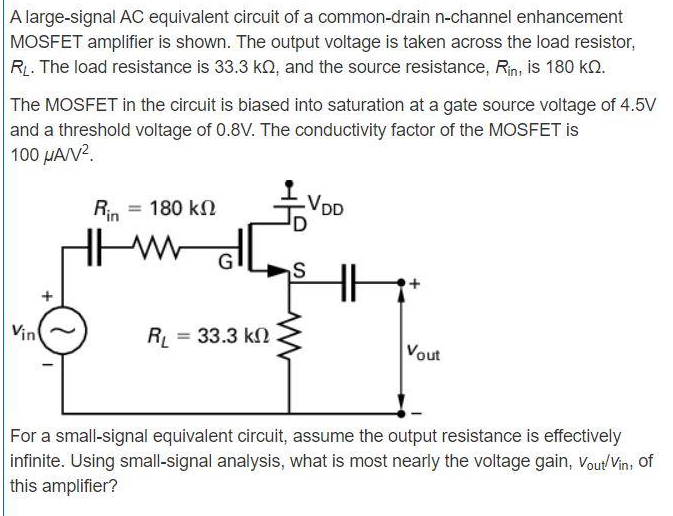A large-signal AC equivalent circuit of a common-drain n-channel enhancement MOSFET amplifier is shown. The output voltage is taken across the load resistor, RL. The load resistance is 33.3 kΩ, and the source resistance, Rin, is 180 kΩ. The MOSFET in the circuit is biased into saturation at a gate source voltage of 4.5 V and a threshold voltage of 0.8 V. The conductivity factor of the MOSFET is 100 μA/V2. For a small-signal equivalent circuit, assume the output resistance is effectively infinite. Using small-signal analysis, what is most nearly the voltage gain, vout/vin, of this amplifier?
